#freshwater stingray
Text
Daily Ray Fact:
*these are starting to get away from me 😅 whoops. Here's the actual fact*
The Tiger River Ray is a species of freshwater ray. This endangered species is endemic to black- and whitewater rivers in the upper Amazon basin in northeastern Peru. So little is known about its population and reproductive habits that it is impossible to say what its status is in the wild.


#tiger river ray#river ray#river stingray#tiger stingray#stingrays#stingray facts#daily stingray facts#daily ray facts#daily stingray#fish facts#ray facts#ray family#ray post#stingray post#respect the locals#cartilaginous fish#marine#marine life#freshwater ray#freshwater stingray
306 notes
·
View notes
Note
What about freshwater stingray, now thought to be the biggest confirmed fish? :D
FLAT FUCK FRIDAY!!!!!!!!!!!!!
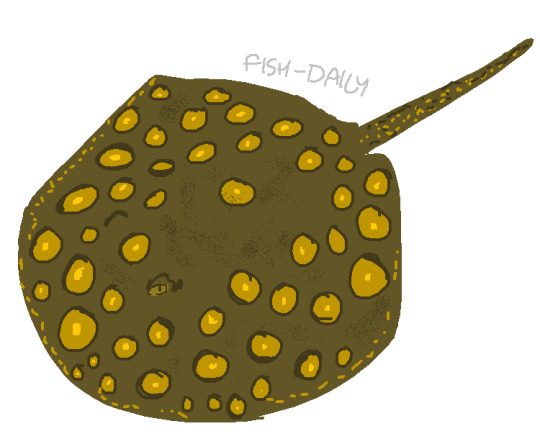
fish 79 - freshwater stingray
166 notes
·
View notes
Photo

Stingray Found in Cambodia Sets Record for World’s Largest Freshwater Fish
The enormous fish is 13 ft long and weighs 661 lbs
The world’s largest freshwater fish, a 13-foot-long, 661-pound stingray, has been discovered in the Mekong River in Cambodia. Scientists say the animal is a hopeful sign for the river, which faces threats from human encroachment and development, damming and climate change, per a statement from FISHBIO, a fisheries and environmental consulting company.
The giant freshwater stingray (Urogymnus polylepis) was caught on June 13 by a local fisherman, who alerted scientists from the Wonders of the Mekong project, a joint Cambodian-U.S. research and outreach initiative.
The Mekong River, which runs through China, Myanmar, Laos, Thailand, Cambodia and Vietnam, is home to several giant fish species. This particular section—south of Stung Treng in northeastern Cambodia—may be an important breeding ground for the stingrays; four females of the species, including this one, have been caught in the area recently, per the AP. Last month, a group of local fishermen caught a 400-pound female stingray in the same stretch, writes Mongabay’s Carolyn Cowan...
Read more: https://www.smithsonianmag.com/smart-news/stingray-found-in-cambodia-sets-record-for-worlds-largest-freshwater-fish-180980288
#stingray#ray#elasmobranch#freshwater stingray#fish#ichthyology#rivers#aquatic#freshwater#animals#nature#science#conservation
35 notes
·
View notes
Photo

*in a salesman voice* If you like cats that are circles, or fish that look like pancakes, then oh boy do I have the merch for you!!
But you will have to be quick, because this Circle Time Cat Button and Freshwater Stingray Pancake Sticker will only be for sale until August 7th!!
Buy them Here (circle time) and Here (Pancake)
I hope you will consider adding these silly, cute lil things to your life!! :D
reblogs appreciated!!
#cat#stingray#sticker#button#merch#merch mart#jolly duck club#freshwater stingray#I could find no freshwater stingray merch so I made it myself#the cat is designed after my cat haha#she is very good at becoming a circle#sea animal#fish#circle cat#2DP art#2DP Merch
19 notes
·
View notes
Text
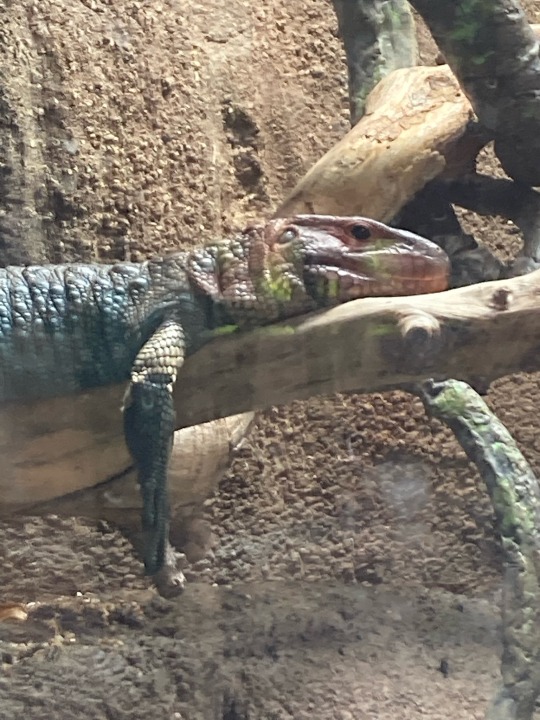
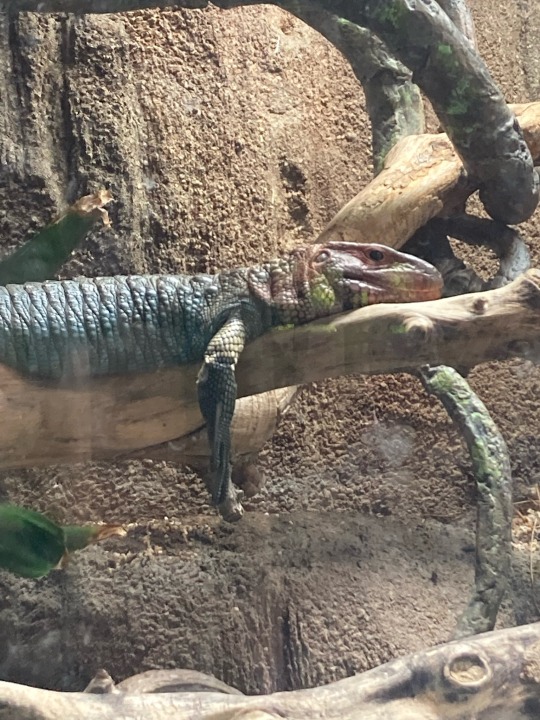


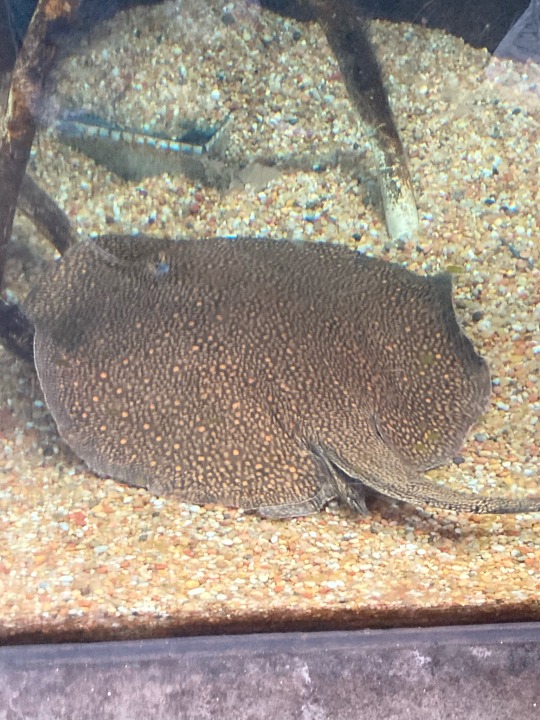

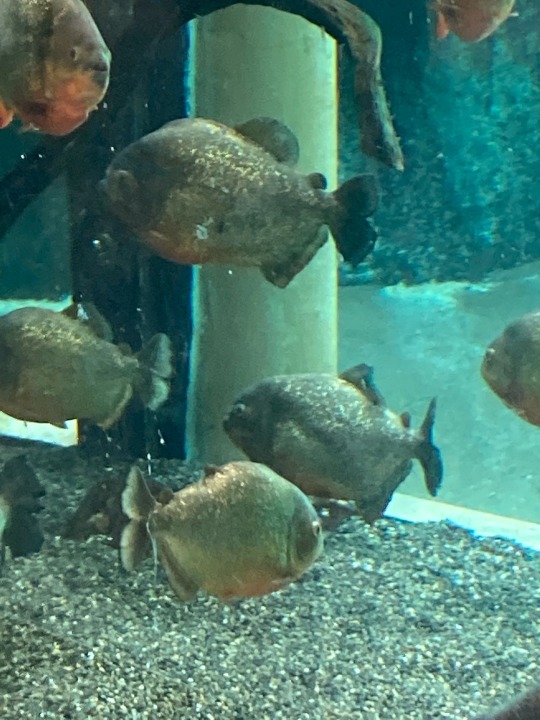
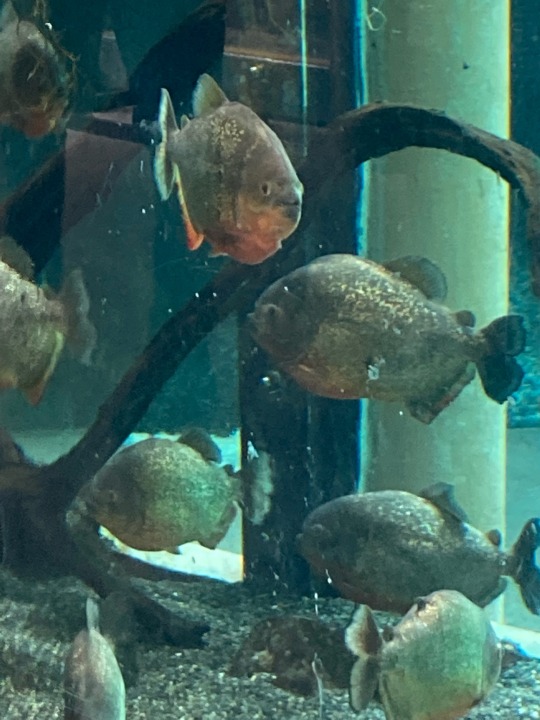

Images from the rainforest exhibit
0 notes
Text
Uncharismatic Fact of the Day
Surprisingly enough, mammals aren't the only animals that provide their young with milk! The giant freshwater stingray is one of several species of cartelaginous, live-bearing fish that sustain their young to term through a form of maternal care called histotrophy, in which the mother provides her embryo(s) with nutritional, milk-like secretions known as trophonemata while they're in the uterus.
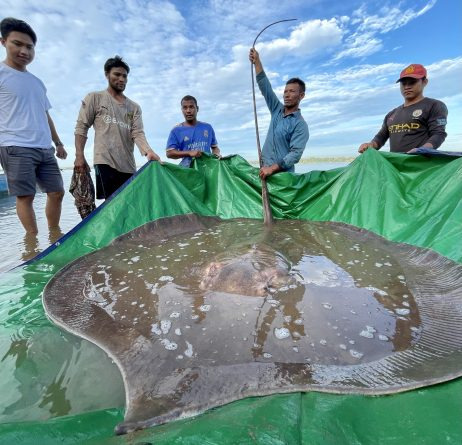
(Image: A giant freshwater stingray (Urogymnus polylepis) caught and released by Cambodian fishermen, by Chhut Chheana)
If you like what I do, consider leaving a tip or buying me a ko-fi!
#giant freshwater stingray#Myliobatiformes#Dasyatidae#whiptail stingrays#stingrays#batoids#cartilaginous fish#fish#uncharismatic facts
246 notes
·
View notes
Photo

The 260-foot depths of the upper Mekong River are home to some of the rarest fish in the world. Last week fishers were stunned when they brought out a 13-foot-long giant freshwater stingray, weighing nearly 400 pounds, from the murky depths. (It quickly was measured and released.)
PHOTOGRAPH BY CHHUT CHHEANA, WONDERS OF THE MEKONG
#chhut chheana#photographer#national geographic#upper mekong river#giant freshwater stingray#fishing#nature#fish
42 notes
·
View notes
Text

errr.. freek..
4 notes
·
View notes
Text

“The team inserted a tagging device near the tail of the fish that will send tracking information for the next year, providing data on giant stingray behaviour in Cambodia.”
11 notes
·
View notes
Video
Patterns by Millie Cruz (On and Off)
Via Flickr:
A not so clear photo of this stingray; the glass was stained with smudges and finger marks. @ Lake Tobias Wildlife Park. Freshwater stingrays live in the Amazon River system and are one of the only rays inhabiting freshwater rather than saltwater. Though docile animals, they are responsible for more injuries to humans each year than any other Amazonian species. These flattened fishes have eyes on the top of their bodies with mouths and gill slits on their undersides. Their tails are typically longer than their disc width and usually have one or more long, saw-like spines behind the pelvic fin. Used for self-defense, the stinger is tipped with barbs that can rip through flesh when withdrawn. Each spine has grooves underneath that contain protein-based venom.
#Lake Tobias Wildlife Park#pattern#animal#Halifax#Pennsylvania#nature#Potamotrygon motoro#Potamotrygonidae#aquatic#Fantastic Nature#Canon EOS R#EF100mm f/2.8L Macro IS USM#Millie Cruz#Entered in a TMI contest#freshwater#stingray#flickr
0 notes
Note
What are their favorite things at the aquarium?
Dick: the penguin feeding
Jason: the electric eels
Tim: the octopus escaping
Damian: the stingray petting
Duke: the moon jellies
Cullen: the swamp exhibit
Stephanie: the mermaid show
Cassandra: the otter pairs
Barbara: the sea turtles
Harper: the shark tunnel
Carrie: the koi pond
Kate: the seahorse tank
Alfred: the coral reef
Selina: the freshwater section
Bruce: the starfish touchpool
#dick grayson#jason todd#tim drake#damian wayne#duke thomas#cullen row#stephanie brown#cassandra cain#barbara gordon#harper row#carrie kelley#kate kane#alfred pennyworth#selina kyle#bruce wayne#batman#batfamily#batfam#batboys#batbros#batgirls#batkids#batsiblings#batman family#dc comics#headcanon
568 notes
·
View notes
Text
Daily Ray Fact:
*Last one and it's kind of a bummer, because there's literally no information on it🙃*
The Rosette River Stingray is also regularly known as the Flower Stingray. It is a freshwater stingray that can be found in the rivers of Northern South America. They are aptly named for the floral design on their disc, which blends in well with sandy river bottoms.
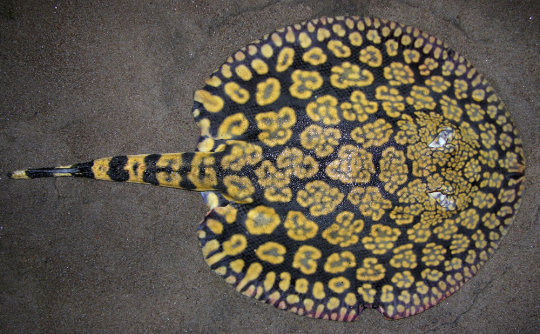
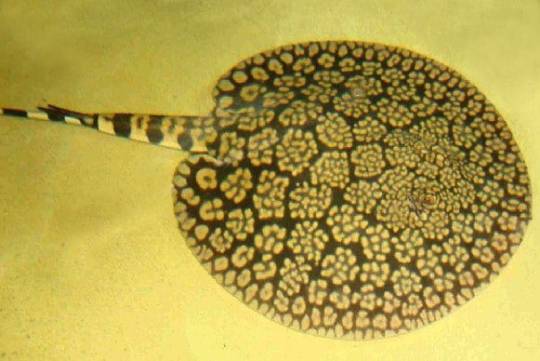
#rosette river stingray#flower stingray#river stingray#stingray#stingray post#stingray family#stingray facts#freshwater stingray#ray facts#ray family#river ray#daily ray facts#daily stingray facts#daily stingray#fish facts#daily facts#marine#marine life#marine animal
223 notes
·
View notes
Note
hello, does jellycat have any rays? stingrays, manta rays, eagle rays, etc? thank you! ♡
Interesting question! I hope Jellycat will design all kinds of ray species in the future, especially a Giant Manta Ray that is about as big as their whales🤣 He would essentially be a pancake/ blanket but that sounds good to me.
Btw, did you know that some ray species chew their food? Biologists at University of Toronto filmed freshwater stingrays munching on soft fish, shrimp, and hard-shelled dragonfly nymphs using high speed cameras. The findings suggested that both mammals and stingrays had evolved similar methods of breaking down food independently of each other. Before that, mammals were believed to be the only animals to chew their food! (sorry, Zoology is my other special interest 😅)
There have been two Jellycat Rays and I love both of them:
Stan Stingray

Ripple Leopard Ray

#asks#jellycat#jellycats#jellycatlondon#jellycatstuffies#jellycatplush#ray#rays#stingray#leopard ray#zoology#marine biology#cute#plush#plushies#plushie#plushblr#plushcore#plushiecore#stuffiecore#plush toy#plush toys#soft toy#soft toys#toycore#fauna#stuffies#stuffed animals#stuffed animal#plush animal
162 notes
·
View notes
Text
TIL you guys also like fish!!!! please let me introduce you to the rest of my fishy community!
first of all, these are my fish tanks:

this is a 20 gallon tall tank that I will be upgrading to a 37 long next year when I find out where I’m going for residency. the 5lb pressurized cannister is a CO2 tank that I use to inject carbon dioxide into the water (on a timer)! CO2 is the limiting “nutrient” for plant growth underwater in a tank like mine (with bright light and fertilizers added), so it helps encourage plant growth and more vibrant colors in plants with red and orange tones, as well as carpeting plants.

this is a 6.4 gallon tank that also has CO2 injection, and currently no fish because it is cycling (and will be for about 4 weeks). it will be her highness the betta fish’s new home once it is cycled, because she keeps murdering my shrimp in the community tank. once she is moved, I will probably get a pair of honey gouramis for the community tank.
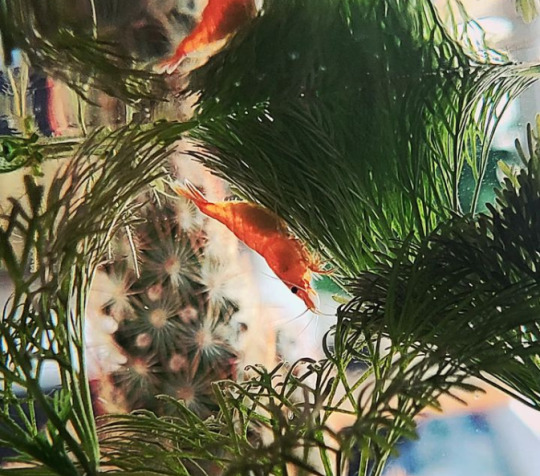
this is one of the shrimp in question! she is pregnant. (eggnant, you might say.) I love her.

these are my kuhli loaches! I have 6 black and 6 banded. they are technically different species and the banded ones are much more shy. they spend a lot of time swimming circles along the glass and draping themselves over plants upside-down to make me think they are dead. they get very offended when you poke them to make sure they’re not dead.

I have 8 neon tetras. they’re all fat and extremely hard to take non-blurry photos of.
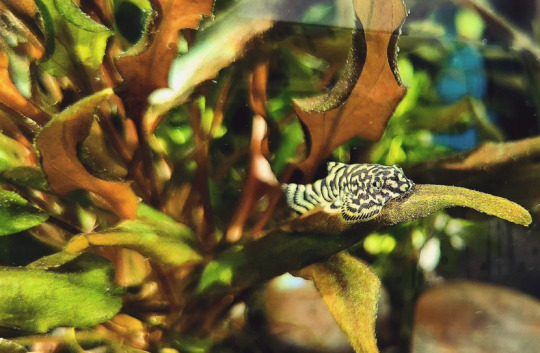
I also have 3 hillstream loaches, which are one of my favorite fish of all time. they’re juveniles that bred from a friend’s tank, and they look like tiny little stingrays that are frequently stuck to the side of the glass. they are aufwuchs-eaters which means they scrape algae and biofilm off the surfaces of things, but they also like sifting through sand and need sufficient protein (aka. not pure algae eaters).
here’s what they look like from the bottom:
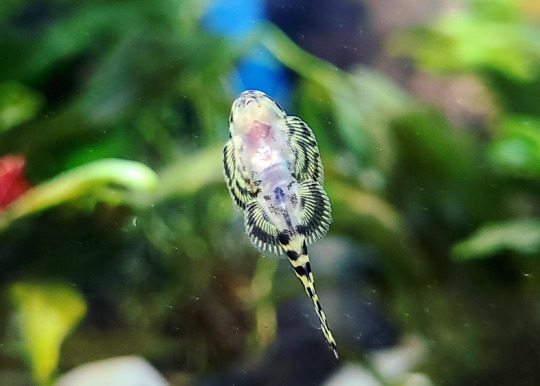
I also have snails:

this is the biggest of my three nerite snails! I like nerites because they have bright colors and they don’t reproduce in fresh water. however, if you get a female (like this one), they WILL lay tiny white little sesame seed eggs everywhere, even though they can’t hatch. I used to have “pest” snails in the form of bladder snails and freshwater limpets but, uh, I have a total of 15 loaches in the tank, so. I no longer have pest snails and my loaches are all well-fed. :”)
thank u for coming to my ted talk. I love fish. I love my fish. please come talk to me about fish. I leave u with one last photo of her highness in all her glory:
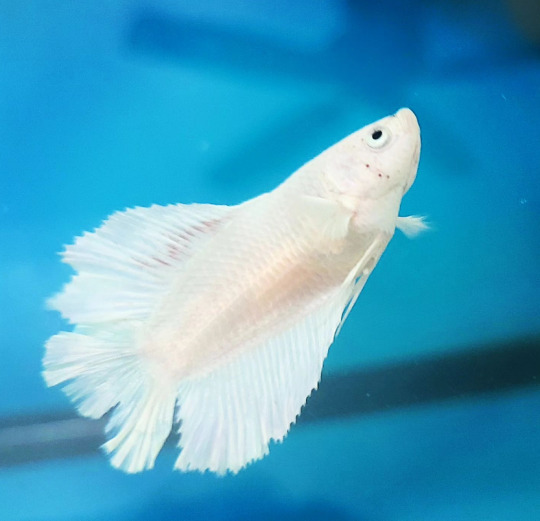
#personal#long post#petblogging#aquariums#you may notice that her highness's tail is slightly tattered in this one#that is becaues it was taken while she was still healing from her stint#of fucking around and finding out#with a crayfish#(which was my fault. the sources I read that said you can keep CPO dwarf crayfish with short-finned bettas were extremely unreliable)#(as I learned belatedly. cray was rehomed and her highness healed up just fine)#wait until u guys learn how obsessed I am with AQUARIUM PLANTS#these tanks look like that for A Reason#betta fish#neocaridina
161 notes
·
View notes
Text
Taxonomy Tournament: Results of Round 1
Long post, many stats.
The three biggest landslides were Opiliones (daddy longlegs) beating Parasitiformes (ticks) (87.89%, 334 to 46 votes), Terebellida (Pompeii worms) beating Scolecida (bamboo worms) (88.94%, 193 to 24 votes), and Hemiptera (true bugs) beating Phthiraptera (lice) (91.04%, 19 to 193 votes).
The three closest matches were Perissodactyla (horses and rhinos) beating Pholidota (pangolins) (50.6%, 747 to 765 votes), Caniformia (canines, bears, foxes...) beating Feliformia (felines, mongooses...) (50.28%, 538 to 532 votes), and Struthioniformes (ostriches) and Rheiformes (rheas) tying (50%, 144 to 144 votes).
To break the tie, I will discount my own vote (for Struthioniformes), so Rheiformes win.
Interesting that the top 3 landslides were all invertebrates (actually all top 7), while the 3 closest matches were all between Chordates (actually 4).
The average winning percent was 67.10% for all matches, and was 71.28% between non-chordates and 62.91% between chordates. So the chordate matches were closer in general.
As you may have guessed from the biggest landslides, parasites fared quite poorly. While the bracket started with 9 primarily parasitic clades, only 3 made it to this round (Hirudinea [leeches], Eucestoda [tapeworms], D. medinensis [nematode]) and all three were against other parasites.
The biggest landslide among Mammals was Didelphidae (possums) beating Hyracoidea (dassies) (80.26%)
The biggest landslide among Birds was Columbiformes (pigeons and doves) beating (flamingos) (72.34%)
The biggest landslide among Non-Avian Reptiles was Serpentes (snakes) beating Rhynchocephalia (tuatara) (60.60%). The closest match among Reptiles was Iguania (iguanas, chameleons...) beating Anguimorpha (Komodo dragon) (51.09%)
The biggest landslide among Cartilaginous Fish was Myliobatiformes (stingrays) beating Rajiformes (skates) (81.20%). The closest match was Rhinopristiformes (shovelnose ray, sawfish...) beating Torpediniformes (electric rays) (51.44%)
The biggest landslide among Bony Fish (and Chordates in general) was Osteoglossiformes (African Knifefish) beating Hiodontiformes (mooneyes) (84.71%). The closest match was Toxotidae (archerfish) beating Istiophoriformes (swordfish) (50.64%).
The biggest landslide among Echinoderms was Asteroids (starfish) beating Peripodida (sea daisies) (82.95%). The closest match was Echinacea (sea urchins) beating Gnathostomata (sand dollars) (55.38%).
The closest match among Annelids was Eunicida (eg. Bobbit worm) beating Phyllodocida (eg. Gossamer worm) (54.38%)
The biggest landslide among Gastropods was Neomphalida (volcano snails) beating Umbraculoidea (false limpets) (86.67%). The closest was Conidae (cone snails) beating Strombidae (conches) (51.39%)
The biggest landslide among Cephalopods was Sepiida (cuttlefish) beating Spirulida (Ram's horn squid) (77.53%). The closest match was Oegopsida (glass squid, giant squid...) beating Myopsida (European squid, reef squid...) (61.9%).
The biggest landslide among other molluscs was Polyplacophora (chitons) beating Scaphopoda (Tusk Shells) (84.35%). The closest was Heterodonta (edible clams) beating Palaeoheterodonta (freshwater mussels) (52.08%)
The closest match among Insects was Mantodea (mantises) beating Blattodea (roaches and termites) (72.9%). Interestingly still a pretty big landslide.
The biggest landslide among Crustaceans was Thecostraca (barnacles) beating Tantulocarida (parasites of crustaceans) (83.33%). The closest match was Branchiopoda (fairy shrimp) beating Copepods (56.54%)
The closest match among Invertibrates was Eucestoda (tapeworms) beating Amphilinidea (parasites of turtles) (50.65%).
Round 2 starts tomorrow!
#Animal Tournament#Animal Tournament Announcements#biology#taxonomy#animal biology#marine biology#evolution#zoology#tumblr polls#tournament poll#poll tournament#bracket tournament
41 notes
·
View notes
Text
Shark Dump: Lemon Sharks!
Some of you seemed to enjoy my shark facts and honestly, if I can get the chance to rave about sharks, I will. So here are some shark facts starting with my favorite, Lemon Sharks!!
If you guys enjoy this, feel free to leave me a request with the name of a shark you'd like to learn about and I'll be happy to info dump on them. I'm thinking about posting one every Sunday (Shark Sundays!!! :D )
Technically I was supposed to post this earlier but I didn't lol oops-
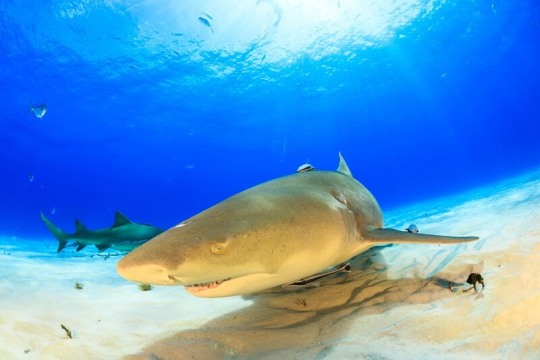
Conservation Status: NEAR THREATENED
This cute guy here is a Lemon shark or Negaprion brevirostris! They get this name from their yellowish skin and yellow bellies but they can be anywhere from brown to olive colored. Lemon sharks are mostly native to the Atlantic Ocean and parts of the Pacific where they occupy coral keys, mangrove forests, bays and even docks. Most populations can be found in Gulf of Mexico, the West Indies, and the Caribbean.
They can grow up to 11 ft long which makes them one of the larger species of sharks but don't let their size scare you! These guys are mostly scavengers that hunt for food near sandy in-shore areas. Most of the lemon sharks diet consists of bony fish, crustaceans and stingrays although they occasionally snack on seabirds or smaller sharks. They hunt using electroreceptors on their nose, called ampullae de Lorenzini, which help them detect fish and other creatures, even buried in the sand.
(Remember, sharks don't have hands so they rely on their nose and mouth to explore the enviroment around them!)
Lemon sharks usually live in oceanic waters that are no deeper than 188 ft although some have been found in waters at depths of up to 300 ft. They are one of 43 sharks that can swim in freshwater but usually don't travel very far into these waters as they can't survive for long periods in them. If you see a lemon shark in freshwater, they're probably just there for a quick bite to eat before heading back to the ocean.
Fun Fact: Bull sharks are the only shark that can survive in both salt and fresh water! They're also one of the dumber sharks and will try to eat anything that fits in their mouths.
Despite how scary they look, lemon sharks are actually a favorite among divers and marine biologist because of their docile behavior! They rarely attack humans (As of 2011, researchers had found only 10 cases of lemon sharks attacking humans, and none of these cases were deadly), in fact, they are very shy and usually try to avoid us. Though if they do approach, they're usually just being curious and will bump you with their nose.

But my favorite thing about lemon Sharks? Once they get over their shyness, they LOVE getting belly rubs! They find the sensation very pleasant and will actively seek out the divers who pet them, even chasing other sharks away if they feel the diver’s giving them too much attention. Sometimes, if you rub their belly too much or if you stimulate the tiny sensory pores located on their snout, you can put them into something called tonic immobility.
Tonic immobility is a reflex that causes a temporary state of inactivity in an animal. Similar to hypnosis! Researchers aren't sure why sharks do this as it's usually thought to be a prey instinct so apex predators like sharks shouldn't have this. But most researchers have found that the sharks aren't stressed when they perform this behavior so it might just mean they're really relaxed! This is backed up by the fact that when in this state the shark’s muscles relax and their breathing becomes deep and rhythmic. Sharks usually enter tonic immobility in less than a minute and they can remain in this state for up to 15 minutes. It doesn't hurt them at all and researches use this to help subdue them.
Lemon sharks (like many other sharks) are imperative to keeping our reefs alive and healthy. Without them, we've already begun to see a major decline in coral reefs and seagrass beds. By taking these sharks out of the coral reef ecosystem, there's nothing to keep the larger predatory fish in check and they overfeed on the herbivores. With less herbivores, macroalgae expands and coral can no longer compete, shifting the ecosystem to one of algae dominance causing the reefs to eventually die out.
Now, back to lemon sharks and the most important fact I have about them: their conservation status.
Lemon sharks are considered to be near threatened. This means that they are likely to become endagered in the near future. This is because they are targeted by commercial and recreational fishermen primarily due to their highly prized fins. Their meat is also in high demand and is considered a delicacy in many areas. Further, the continuing destruction of their habitat has led to the severe decline of lemon shark populations.
But thankfully, there are steps already being taken to help protect these sweet sea puppies. The Florida Fish and Wildlife Conservation Commission prohibits the harvesting of lemon sharks in state waters. Any lemon shark that catches onto a hook is to be released immediately, either by removal of the hook from the shark or by cutting the shark free—whichever will release the shark quickest. Some countries are also slowly starting to put in protections for them as well.
You can also help! Many people view sharks as blood-thirsty monsters due to decades of slander campaigns and hollywood scare movies (I'm glaring at you Jaws). But we can change that view by showing the world just how beautiful and intelligent these creatures really are! The more informed people are about the sharks, the more we can do to help them. Just by reading this post and learning about lemon sharks, you're helping! Now, the next time you hear someone talking smack about sharks, you can smack them with some cool shark facts! Then hopefully with enough smacking, we can change how people see these lovely predators and get more support for their protection.
#science#marine biology#sharks#shark facts#marine life#lemon shark#conservation#shark conservation#i just love sharks man#sea puppies#that's all they are#sea puppies with very sharp teeth
312 notes
·
View notes
